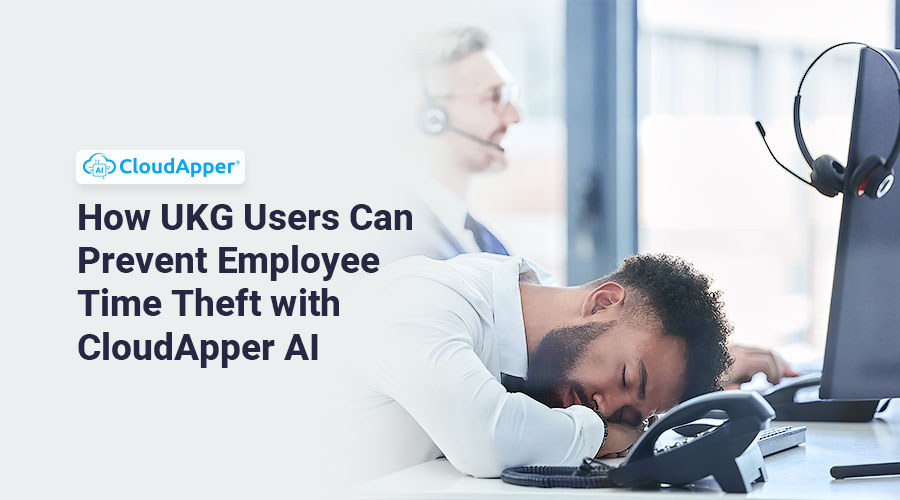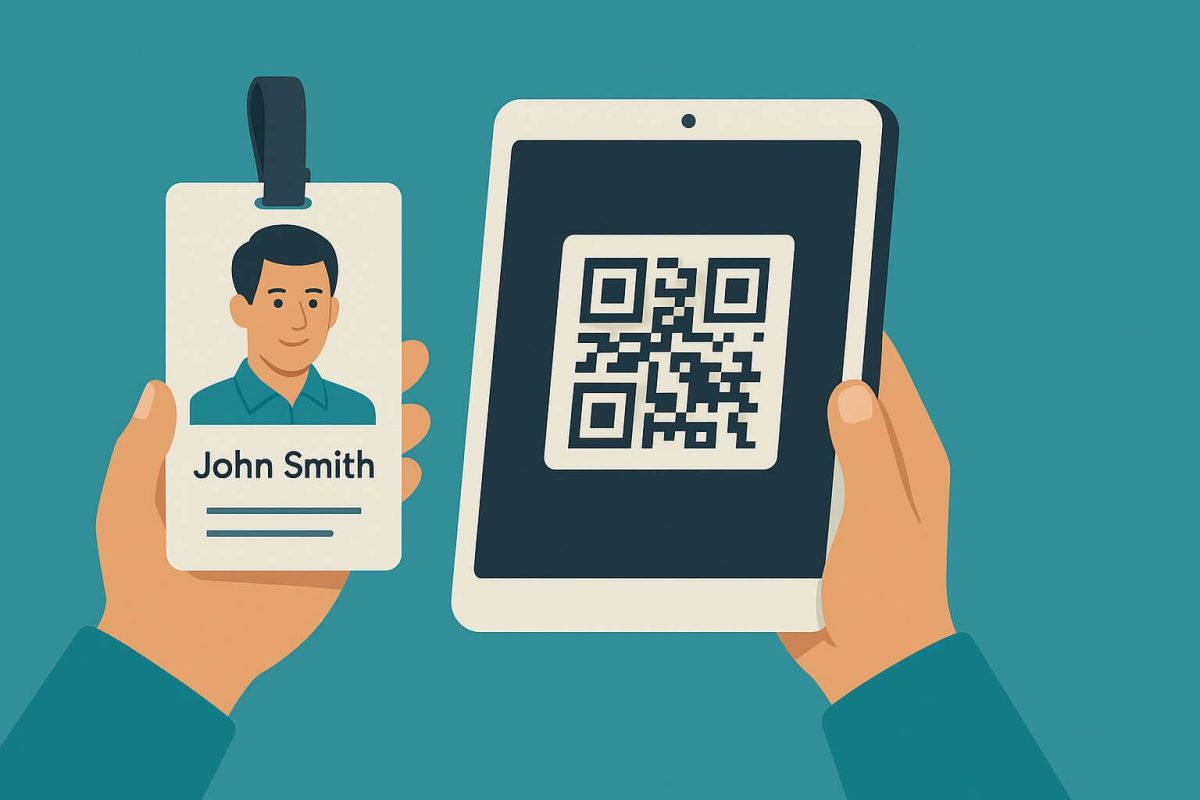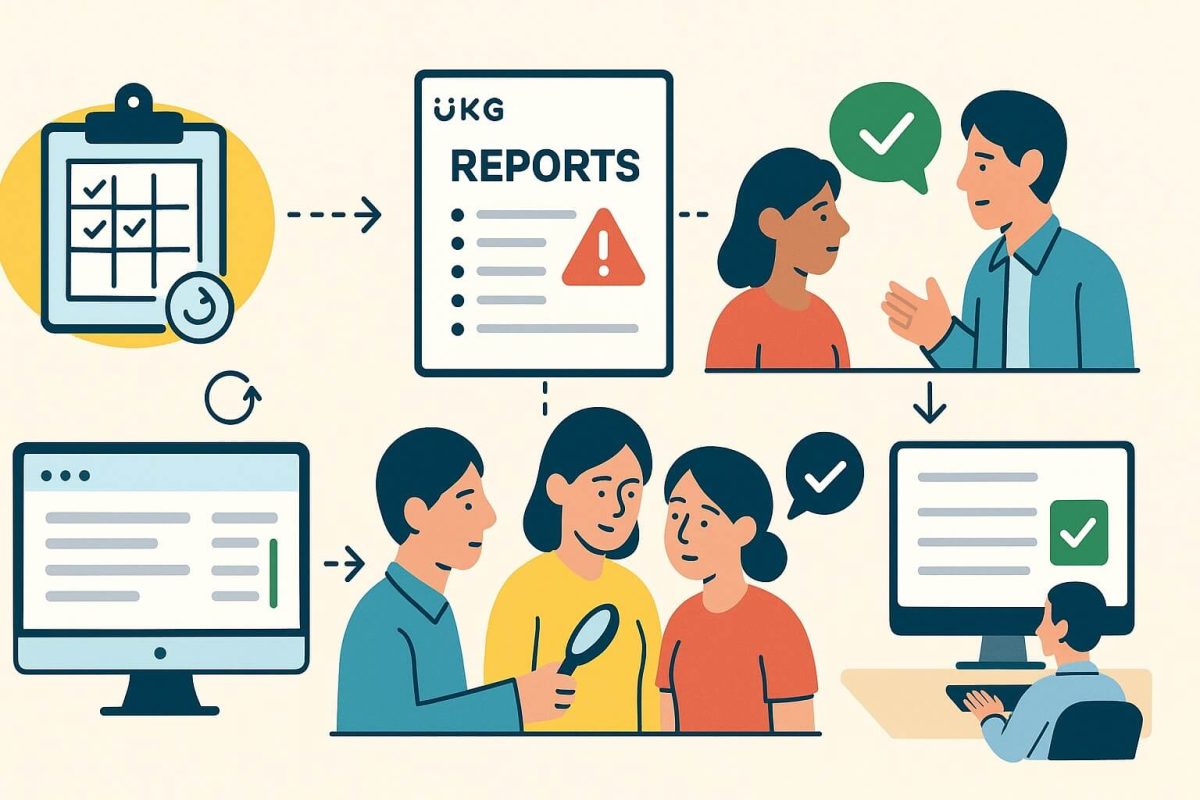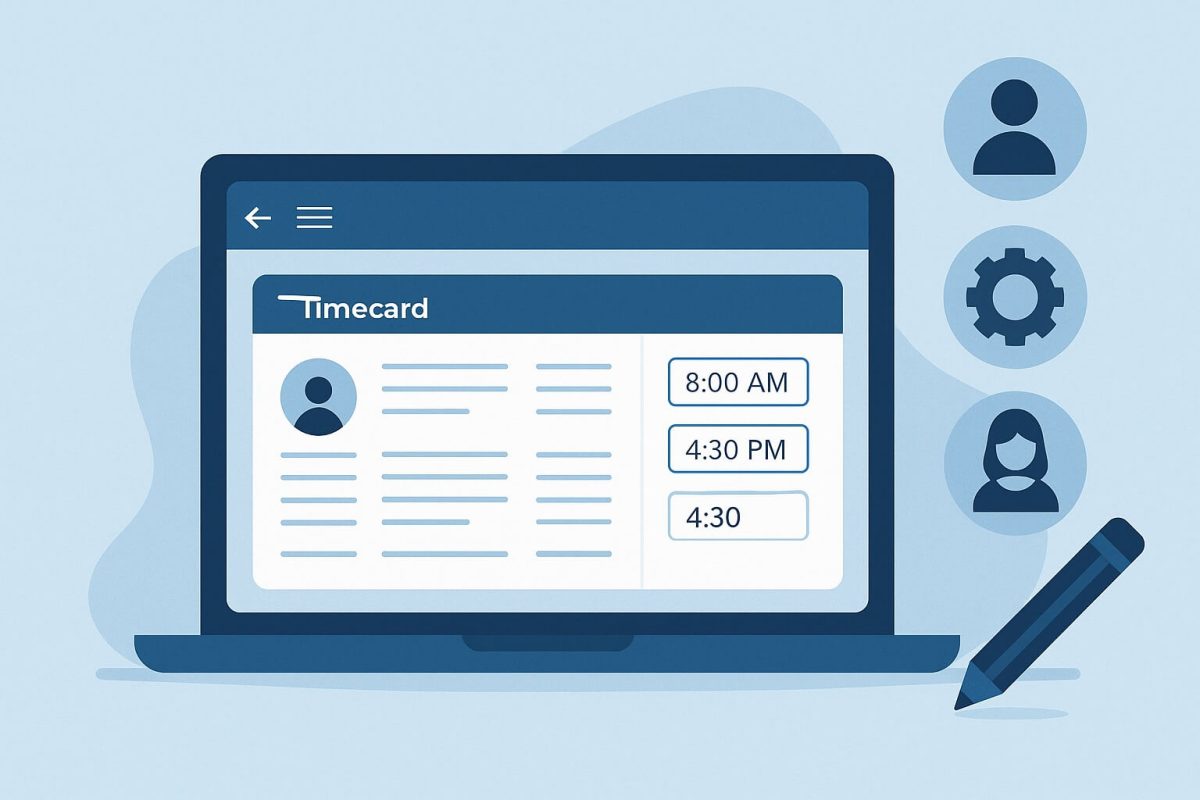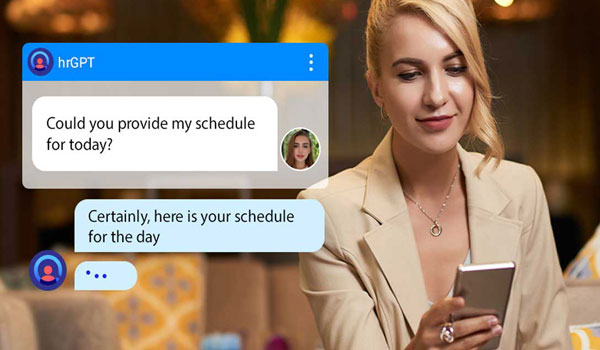Discover how UKG users can prevent employee time theft with CloudApper AI TimeClock. Learn how facial recognition, self-service access, and verified time tracking reduce errors, build trust, and save hours each week for a more transparent and efficient workplace.
Table of Contents
Employee time theft might sound small on the surface, but it adds up fast. When someone clocks in early, takes longer breaks, or has a coworker punch in for them, that’s time theft, and it costs more than most people realize. In fact, businesses in the U.S. lose more than $11 billion every year to time theft, and nearly half of employees (49%) admit to doing it in some form. [1] For companies already running tight on resources, that’s a huge drain on profits and trust.
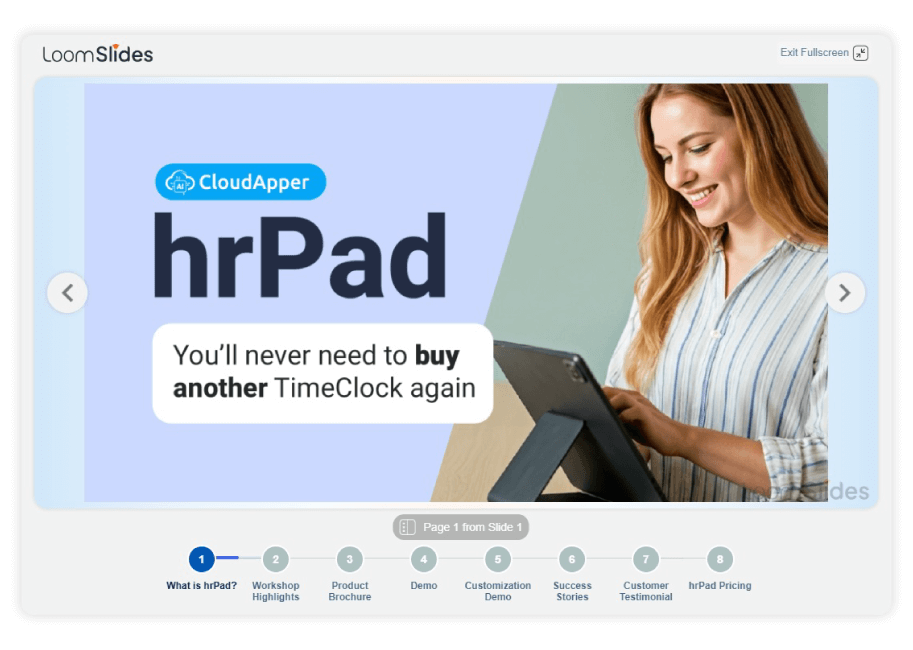
For more information on CloudApper AI TimeClock for UKG visit our page here.
If you use UKG, you already have one of the best workforce management systems in place. But to fully prevent employee time theft, many UKG users are turning to CloudApper AI TimeClock, a simple, customizable tool that keeps your workforce honest and accountable.
TL;DR
-
What is employee time theft? It’s when employees get paid for hours they didn’t actually work, through buddy punching, extended breaks, or falsified hours.
-
How big is the problem? U.S. businesses lose over $11 billion each year, and employers lose about 4.5 hours per week per employee to time theft.
-
Why does it matter? Time theft inflates payroll, reduces productivity, and weakens trust across teams.
-
How does CloudApper AI TimeClock help? It prevents employee time theft with facial recognition, ensuring accurate records.
-
What’s the result for UKG users? A more transparent, efficient, and fair workplace where every minute worked is accounted for.
Common Types of Employee Time Theft
Here are some of the most frequent ways it happens:
-
Buddy Punching: Buddy punching happens when one employee clocks in or out for someone else who isn’t actually there. It’s often done to cover for a late coworker or one who wants to leave early, but it ends up inflating paid hours unfairly.
-
Falsifying Hours: Some employees manually change their time records to make it look like they worked longer than they did. Even adding a few extra minutes each day can quietly add up to hours of unearned pay over time.
-
Extended Breaks: Taking longer breaks than allowed might seem harmless, but when it becomes a habit across teams, it leads to lost productivity and scheduling headaches.
-
Early Logouts: Leaving work before the end of a scheduled shift but staying clocked in is another common form of time theft. It means getting paid for time that wasn’t actually worked.
-
Ghost Employees: In larger organizations, payroll errors sometimes result in payments being made to employees who no longer work there. These “ghosts” on the payroll can cost companies thousands if not caught early.
Each of these may seem minor alone, but across a workforce, the impact can be huge.
How Employee Time Theft Impacts Businesses
The effects of time theft go beyond just money; it affects company culture, productivity, and even morale.
1. Financial Losses: Paying for unworked hours means wasted payroll dollars. Across industries, U.S. businesses lose more than $11 billion annually to time theft. In fact, employers lose about 4.5 hours per week per employee to time theft. [2] For some, that’s the difference between breaking even and staying in the red.
2. Productivity Drop: When time isn’t tracked accurately, staffing decisions and project timelines get distorted. Over time, this leads to lower output and unnecessary overtime costs. Even minor inconsistencies across teams can make planning harder and slow down the whole operation.
3. Decreased Morale: When some employees cheat the system, honest workers notice. Over time, it creates resentment and mistrust, the kind that hurts teamwork.
4. Compliance Issues: Inaccurate time records can create legal and payroll audit problems, especially for regulated industries.
That’s why preventing employee time theft isn’t just a financial concern; it’s about fairness, accuracy, and culture.
Want to see how quick & verified clock-ins can stop time theft across your teams?
How UKG Users Can Prevent Employee Time Theft With CloudApper AI TimeClock
UKG already provides a strong foundation for time and attendance management. But CloudApper AI TimeClock adds an extra layer of protection that makes it nearly impossible for employees to falsify time or manipulate records.
Let’s look at how it works.
Identity Verification to Stop Buddy Punching
CloudApper AI TimeClock helps UKG users prevent employee time theft by confirming that every clock-in and clock-out is legitimate. It uses facial recognition to verify employees when they clock in or out.
That means no more shared cards or passwords. Every punch belongs to the right employee, every time.
Custom Data Capture for Compliance
Some organizations have unique compliance or reporting needs. CloudApper allows custom forms during clock-ins and outs to capture additional data from safety checks to attestations.
This not only strengthens compliance but also helps prevent employee time theft by keeping accurate, auditable records of who worked, when, and under what conditions.
Self-Service Features That Encourage Accountability
When employees can see their hours, schedules, and PTO balances directly from the tablet, they’re less likely to make mistakes or manipulate data. Self-service access builds transparency and accountability, two essential elements in reducing time theft.
Compatibility and Ease of Use
CloudApper AI TimeClock works with any off-the-shelf iPads or Android tablets, meaning you can turn existing devices into reliable UKG time clocks. It’s simple to set up and doesn’t require extra hardware or IT support, a huge win for teams trying to keep costs low and productivity high.
Before and After: The Impact of CloudApper AI TimeClock
| Scenario | Before CloudApper AI TimeClock | After CloudApper AI TimeClock |
|---|---|---|
| Buddy Punching | Employees share badges or PINs, making it easy to clock in for others. | Facial recognition and QR verification stop shared punches instantly. |
| Manual Errors | Managers spend hours reviewing and correcting inaccurate punches. | Automated, verified data eliminates manual edits and payroll disputes. |
| Lost Productivity | Companies lose about 4.5 hours per week per employee to time theft. | Verified clock-ins ensure all paid time is productive, reducing wasted hours. |
| Employee Trust | Honest workers feel frustrated seeing others get away with cheating. | Transparent, fair tracking builds trust and improves morale. |
| Compliance Risks | Missing attestations or falsified records create audit headaches. | Custom forms and data logs keep every record accurate and compliant. |
Why CloudApper AI TimeClock Is the Future of Workforce Accuracy
What makes CloudApper AI TimeClock different is how it builds trust between employees and management. It verifies every clock-in with precision, automates compliance workflows, and integrates perfectly with UKG’s time and attendance systems.
You can even use it beyond time theft prevention: to collect shift feedback, track attestation responses, or run pulse surveys right from the clock. It’s a reliable, proven way to prevent employee time theft while improving overall workforce accuracy, transparency, and engagement.
Final Thoughts
Every business loses some time to distractions, technical issues, or errors — that’s human. But employee time theft is preventable. It takes the right tools, clear communication, and fair enforcement. CloudApper AI TimeClock gives UKG users a simple and effective way to protect their workforce, their payroll, and their peace of mind.
Ready to eliminate time theft for good?
References:
[1] https://quickbooks.intuit.com/time-tracking/resources/time-attendance-stats/
[2] https://www.roberthalf.com/us/en
FAQ: Preventing Employee Time Theft
-
What causes employee time theft?
Time theft usually happens when employees feel they can get away with it or when systems lack proper controls like secure verification, clear policies, or approval workflows. -
How can technology help prevent time theft?
Tools like CloudApper AI TimeClock use verification, automation, and accurate tracking to ensure that only the right person clocks in at the right time, reducing errors and abuse. -
Does facial recognition really stop buddy punching?
Yes. Facial recognition confirms each employee’s identity in real time, so one person cannot clock in or out for someone else. -
What are the signs of time theft in a company?
Common signs include frequent missed punches, inconsistent time records, recurring “forgotten clock-outs,” and patterns that do not match actual staffing or workload needs. -
How does CloudApper AI TimeClock integrate with UKG?
CloudApper AI TimeClock syncs seamlessly with UKG, sending verified punches and captured data directly into your existing time and attendance workflows without disruption.





